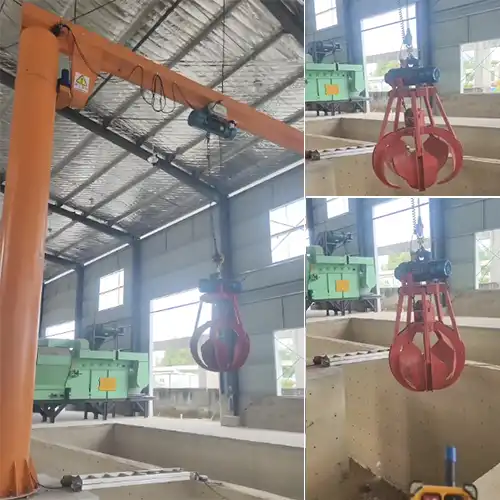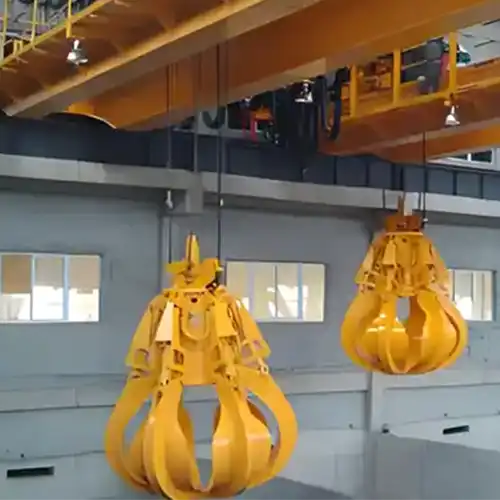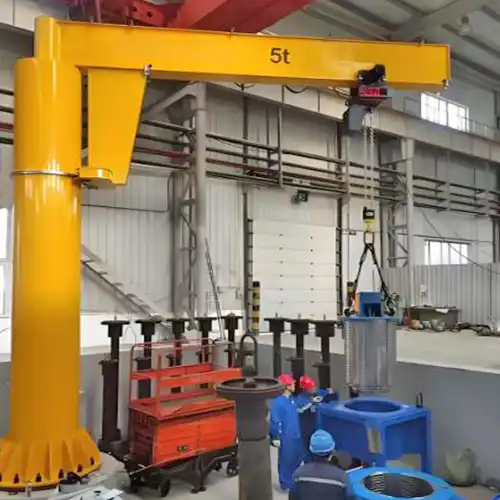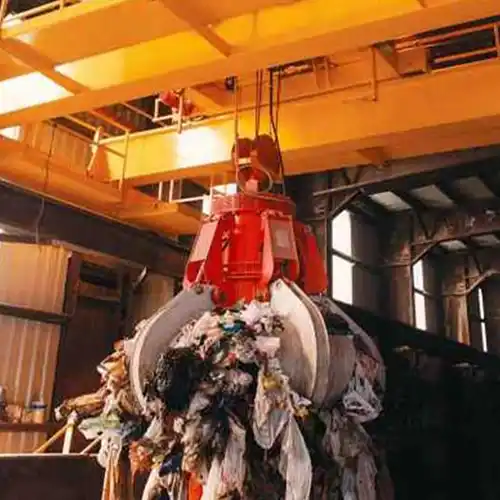Waste Handling 5 Ton Pillar Jib Crane + Grab Bucket, Good Price
A smart, economical waste crane solution for localized garbage handling, improving safety & saving time in waste transfer operations. Jib crane for sale.
Category: Grab Crane
Your Trusted Grab Jib Crane Manufacturer & Supplier
Waste Handling Grab Bucket Jib Crane for Sale
Efficient Waste Management with 5 Ton Pillar Jib Crane and Grab Bucket
Efficient Waste Management with 5 Ton Pillar Jib Crane and Grab Bucket: A Smart and Economical Garbage Handling Solution
Introduction:Managing Waste Is Getting Tougher—and Smarter
Waste handling isn't what it used to be. Whether you're running a recycling yard, a local waste transfer station, or a biomass fuel site, you've probably noticed: waste is piling up faster, and labor isn't getting any cheaper.
With increasing pressure to improve efficiency, reduce physical labor, and maintain clean, safe operations, more and more small and mid-sized facilities are turning to mechanized lifting solutions. But not every site can afford—or even fit—a full-size bridge crane or gantry system.
Manual Waste Handling Has Its Limits
In many waste facilities, workers still use manual tools like forklifts or pulleys to lift and dump garbage bins or grab loose waste from pits. While that might have worked before, it's not a long-term solution—especially as the volume grows or waste types get messier and heavier.
Common issues with manual or basic conveyor handling include:
- Slow cycle times when transferring waste from bin to truck or pit
- High physical strain and risk of injury to workers
- Difficulty handling wet, loose, or bulky waste
- Frequent spills and mess due to lack of control during dumping
- Limited reach and flexibility when working around corners or machinery
A Compact and Practical Answer: The Pillar Jib Crane with Grab Bucket
For small to medium-sized sites, especially where space is tight and budgets are tighter, the 5 ton pillar jib crane equipped with a grab bucket and wireless remote control is proving to be a smart and reliable choice.
You can install it in a corner, over a pit, next to a shredder, or even outside under a roof. And it gets the job done—quickly, safely, and without the headaches of a larger, more complex crane system.
Here's what makes it appealing:
- No building structure needed – the crane stands on its own base
- Grab bucket handles loose, irregular, and smelly waste with ease
- Remote control means no one stands under the load
- Covers just the space you need – not more, not less
- Lower cost, faster installation, and easier maintenance compared to overhead or gantry cranes
In short, this isn't about fancy technology—it's about a tool that makes daily waste handling smoother, safer, and more manageable.
What Is a Pillar Jib Crane with Grab Bucket?
Solid Lifting Tool Built for Localized Waste Handling
A pillar jib crane with a grab bucket is a floor-mounted crane designed to handle materials—like loose garbage, biomass, or general waste—within a specific working radius. It's simple in structure, compact in design, but highly effective for localized lifting needs.
This type of crane is often used in situations where a fixed spot requires repeated lifting and dumping. Think of it as your waste-handling assistant: always in place, always ready to grab and move.
Key Parts and How They Work Together
Let's break down what makes up this crane and how each part plays a role:
- Floor-Mounted Column (Pillar):
This is the vertical support structure, bolted firmly into a concrete foundation. It acts as the central point around which the jib arm rotates. - Horizontal Jib Arm (Fixed or Slewing):
Attached to the top of the column, the arm extends horizontally and supports the hoist. Depending on the design, it can either stay fixed or rotate up to 270° or even 360°. This gives the crane a wide working area without needing to move the base. - Hoisting Mechanism with Grab Bucket:
The hoist, often an electric wire rope type, moves back and forth along the arm and handles the lifting. A grab bucket—usually clamshell or orange peel style—is attached to the hoist for picking up loose, irregular, or smelly waste. It opens and closes via electric or hydraulic control. - Remote Control System:
This allows the operator to stand at a safe distance while controlling the crane. You can lift, lower, rotate, open/close the grab, and even pause operations without touching the machine directly. It adds both safety and comfort. - Integration with Sorting or Transfer Systems:
The crane is often installed next to waste sorting pits, above compactors, beside conveyor belts, or at truck loading zones. It works well in tight areas where mobility is limited, but frequent handling is required.
Applications in Garbage and Waste Management
Where a Floor Mounted Jib Crane with Grab Bucket Makes Daily Waste Handling Easier
A pillar jib crane—also referred to as a floor mounted jib crane or floor jib crane—is designed for fixed-position lifting, making it a strong fit for a variety of localized waste handling tasks. When paired with a grab bucket and operated by remote control, this type of crane becomes a reliable tool for repetitive lifting, especially in tight spaces where large cranes or conveyor systems aren't practical.
Its compact footprint and easy installation make it suitable for operations that require regular material movement without the cost or complexity of overhead systems.
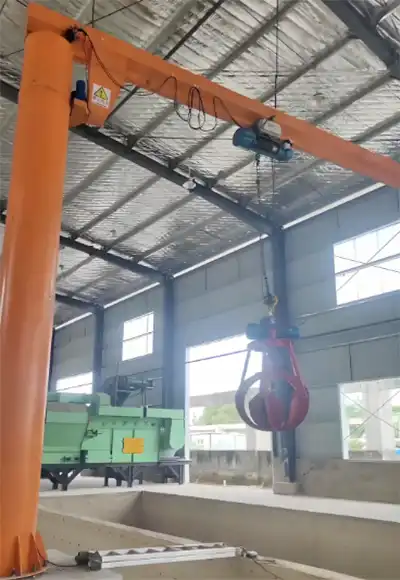
Typical Applications for a Floor Jib Crane in Waste Handling:
- Urban Transfer Stations
A floor mounted jib crane with a grab bucket can be used to lift and dump garbage into compactors, bins, or sorting equipment. It helps speed up truck unloading without blocking space or requiring overhead rails. - Rural Recycling Points
In small towns and countryside waste facilities, a pillar jib crane allows for efficient waste handling without major infrastructure. It can be set up near collection bins or sorting platforms to lift loose or bundled materials. - Biomass Fuel Loading Zones
Sites that process agricultural waste, sawdust, or other organic fuel materials benefit from a floor jib crane. With remote control operation, it becomes easier and safer to load materials into dryers or feeding hoppers. - Paper Mill Waste Areas
Paper mills generate bulky and sometimes wet waste that can be difficult to move manually. A floor mounted jib crane with a grab bucket makes it easier to lift and transfer the waste into skips or conveyors. - Temporary Waste Sorting Yards
For construction clean-up, seasonal waste collection, or short-term operations, a floor jib crane provides quick lifting capability with minimal setup. It's especially useful in open yards or semi-covered areas. - Small-Scale Incineration Prep Pits
In facilities with localized incinerators, a remote control jib crane helps move waste from storage pits to feed chutes. This improves handling efficiency and keeps the operator at a safe distance.
Using a pillar jib crane in waste management offers a practical balance between mobility, lifting strength, and site flexibility. It's well-suited for environments that demand efficient garbage handling but lack the space or budget for large-scale cranes.
Advantages of Using Pillar Jib Crane with Grab
Why a Floor Mounted Jib Crane Is a Smart Choice for Waste Handling
When it comes to lifting garbage or loose waste in a confined or fixed area, a pillar jib crane with a grab bucket offers several down-to-earth advantages. It's not oversized, not overcomplicated—just a practical lifting tool designed to make repetitive tasks faster, safer, and easier to manage.
Whether you're running a transfer station, recycling yard, or a waste pit in a paper mill or biomass facility, this type of crane brings both convenience and efficiency without requiring major changes to your site.
Key Benefits of a Floor Mounted Jib Crane with Grab:
- Efficient Localized Handling
With a slewing range of 270° to 360°, the jib arm covers a circular working area, making it easy to reach multiple bins or loading points without moving the base. Great for fixed-point waste sorting and dumping. - Low Installation Cost
A floor jib crane bolts directly to a concrete foundation. There's no need for steel columns, overhead runways, or runway beams. This keeps civil work to a minimum and lowers setup time. - Safe Remote Control Operation
The crane comes with a wireless remote control system, allowing the operator to lift, rotate, and operate the grab bucket from a safe distance. No need to stand near the load or be exposed to dust, odor, or falling debris. - Compact Footprint
Designed for narrow aisles, tight corners, or small yards, the floor mounted jib crane fits into places where larger cranes simply won't go. It's ideal for urban sites or indoor pits with limited clearance. - Quick Loading and Unloading Cycles
Grab buckets are made to handle irregular or loose waste quickly. Combined with the jib's local coverage and simple controls, this setup allows for fast material transfer with minimal waiting time between lifts.
For waste management operations that need targeted, repetitive lifting without the complexity of full-scale crane systems, a floor mounted jib crane with a grab bucket is one of the most practical solutions available. It keeps things simple, efficient, and well under control.
Key Features and Customization Options of Grab Bucket Jib Cranes
Built to Fit Your Waste Handling Needs—Not the Other Way Around
Not all waste is the same, and not every job site has the same conditions. That's why grab bucket jib cranes come with a range of customization options to match different lifting demands, working environments, and waste types. Whether you're handling dry paper scraps, damp biomass, or corrosive municipal waste, a properly configured pillar jib crane can make a big difference in daily operations.
Below are the key specifications and options you should consider when selecting a floor mounted jib crane for garbage handling.
Core Features and Available Customizations:
- Load Capacity: 5 to 16 Tons
Standard setups usually start from 5 tons, but can be customized up to 16 tons based on your lifting requirement, grab size, and waste density. - Slewing Range: 180° to 360°
The jib arm can be designed for partial or full rotation. Full 360° motorized slewing is ideal when you need complete circular coverage, while 180° to 270° works well in corners or along walls.
Grab Bucket Options:
- Hydraulic grabs for strong clamping and tough materials
- Electromechanical grabs for standard lifting and simple power setup
- Clamshell type for fine or soft waste like paper, sand, or food waste
- Orange peel type for bulky, irregular waste like scrap, biomass, or plastics. More on 12 types of grab bucket secltion tips and more types of grab bucket cranes for sale in our factory.
Control System:
Choose between:
- Remote control for safe, distant operation
- Pendant control for hands-on, local use
Both options allow for full lifting, slewing, and grab control, with emergency stop features.
Material Protection:
For waste environments that are wet, dusty, or chemically aggressive, cranes can be equipped with:
- Anti-corrosion paint
- Galvanized or stainless steel hardware
- Enclosed motors and sealed electricals
Mounting Type:
- Anchor bolts into a reinforced concrete floor
- Base plate design for easy removal or relocation
These setups work well in both permanent facilities and temporary waste yards.
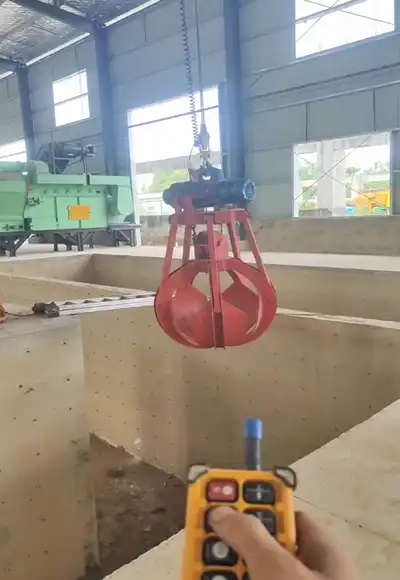
With these features and configurations, grab bucket pillar jib cranes are not one-size-fits-all—they're built to suit the realities of your site. If you're not sure which grab type or slewing range is best for your waste, it's worth discussing your material type, bin layout, and working space before finalizing the setup.
In-Depth Comparison: Pillar Jib Crane vs. Gantry Crane vs. Overhead Bridge Crane
Choosing the Right Crane for Your Waste Handling Needs
When deciding on the best lifting equipment for garbage handling, it's important to understand how pillar jib cranes, gantry cranes, and overhead bridge cranes differ in installation, operation, and application. Each has its own strengths and is suited to different environments and workloads.
Here's a practical comparison to help you see which crane fits your specific situation best.
| Feature | Pillar Jib Crane | Gantry Crane | Overhead Bridge Crane |
|---|---|---|---|
| Installation | Floor-mounted; minimal civil work |
Rails or fixed wheels; outdoor-friendly |
Requires overhead runway beams and structure |
| Working Area | Circular or fixed radius around pillar |
Rectangular, large span outdoor areas |
Entire building width and length |
| Mobility | Fixed | Mobile (rail-mounted or rubber-tired) |
Fixed within runway |
| Cost | Economical; low installation cost |
Moderate to high | High (structure + crane) |
| Grab Handling Efficiency | Ideal for repetitive point handling |
Great for yard-wide movement |
Best for full waste mixing and furnace feeding |
| Control | Remote or pendant | Remote or cabin | Cabin or remote |
| Typical Use Case | Waste bins, sorting pits, conveyor feed |
Yard waste loading, skip handling |
Waste bunker mixing in incineration plant |
| Space Requirement | Low | Moderate to high | Requires full indoor space |
| Maintenance | Simple | Moderate | Complex |
Summary
- Pillar jib cranes are perfect when you need a cost-effective, compact, fixed-position solution. They excel in confined spaces like sorting pits or transfer stations where repetitive localized lifting is required.
- Gantry cranes are a step up in scale and mobility, ideal for open yards where waste bins or containers need to be moved across a wider area but without the need for a permanent building structure.
- Overhead bridge cranes serve the heaviest and most continuous lifting tasks in large, indoor waste processing plants or incinerators. They require significant infrastructure but provide full coverage and automation capabilities.
Choosing the right crane depends on your site layout, budget, and the volume of waste you need to handle. If you want help assessing which crane fits your needs best, feel free to reach out.
When to Choose Each Crane Type for Garbage Handling
Choose Pillar Jib Crane When:
A pillar jib crane is ideal as a waste handling crane when lifting is needed in a fixed, localized spot—such as a sorting pit, waste bin area, or conveyor zone. It's the practical choice for sites with limited space and budget.
- You need an economical garbage handling crane with minimal installation costs.
- Quick setup is important, and you want to avoid heavy civil or structural work.
- There's no room or budget for overhead beams or large supporting structures.
Choose Gantry Crane When:
A gantry crane works well as a waste handling crane for larger outdoor areas where flexibility and mobility are important.
- Your operation covers a wide yard or open space requiring waste movement over longer distances.
- You handle multiple waste bins or containers spread across the site regularly.
- You want a garbage handling crane that can be temporary or moved as needed.
Choose Overhead Bridge Crane When:
An overhead bridge crane suits permanent facilities with high-volume waste processing and precise material handling needs.
- You operate a large-scale waste processing plant or incineration facility.
- Waste needs to be mixed, sorted, and fed accurately into furnaces or production lines.
- You require a fully automated waste handling crane for continuous, heavy-duty operation.
By matching the right type of waste handling crane—whether a pillar jib, gantry, or overhead bridge crane—to your site's needs, you can improve efficiency, safety, and cost-effectiveness in garbage handling operations.
Site and Installation Considerations for Pillar Jib Crane with Orange Peel Bucket
Preparing Your Site for a Smooth and Safe Installation
Installing a pillar jib crane equipped with an orange peel bucket requires careful planning to ensure efficient operation and long-term reliability. The right foundation, clear working space, and proper utility connections all play a key role in getting the crane up and running without issues.
Important Factors to Keep in Mind:
- Flat Concrete Foundation for Pillar Mounting
The crane's pillar must be securely anchored to a strong, level concrete base. This foundation needs to be designed to handle the crane's load capacity and dynamic forces during lifting and slewing. - Space Planning for Slewing Radius and Lifting Zone
Since the jib arm rotates (typically between 180° and 360°), ensure there's enough clearance around the crane. This includes considering nearby walls, equipment, or walkways to prevent collisions and allow smooth operation. - Weather and Environmental Protection for Outdoor Installations
If the crane is installed outdoors or in a harsh environment, protective coatings, sealed motors, and corrosion-resistant materials are essential to withstand dust, moisture, and temperature changes. - Power Connection and Safe Control Distance
The crane's electrical supply must be stable and comply with local standards. Additionally, the remote control system requires a reliable communication link, so operators can work safely at a distance without interference. - Grab Bucket Attachment and Hose Routing
Proper fitting and secure connections between the hoist and the orange peel bucket are vital. For hydraulic grabs, hose routing should avoid sharp bends or pinch points to prevent leaks or damage.
By addressing these site and installation considerations ahead of time, you'll ensure your pillar jib crane with an orange peel bucket operates safely, efficiently, and with minimal downtime.
Use Case of 5 Ton Pillar Jib Crane with Waste Grab
Project Overview: Efficient Waste Handling in Vietnam
Project: Installation of a 5 ton pillar jib crane equipped with a grab bucket
Challenge: The site faced labor-intensive and slow waste bin transfer, causing delays and safety concerns.
Solution: A 5 ton floor-mounted jib crane paired with an electromechanical grab bucket and wireless remote control was installed to automate the lifting and dumping process.
Result:
- Achieved 60% reduction in waste handling time
- Reported 50% fewer workplace injuries due to remote operation and mechanization
- Recovered investment within 1 year through increased efficiency and lower labor costs
Technical Specifications for Reference
| Parameter | Value |
|---|---|
| Rated Load | 5 Ton |
| Max Lifting Height | 6m (customizable) |
| Slewing Angle | 360° |
| Slewing Mechanism | Electric Slewing |
| Grab Bucket Volume | 0.5 cubic meters |
| Control Method | Wireless Remote Control |
| Power Supply | 380V / 50Hz / 3 Phase or custom |
| Working Duty | A3 |
This case highlights how a compact, well-configured pillar jib crane with a grab bucket can transform waste handling tasks, saving time and improving safety without requiring large infrastructure changes.
Conclusion
The 5 ton pillar jib crane with grab bucket is an excellent solution for localized, low-cost, and efficient garbage handling. It stands out by offering simplicity, affordability, and safety, especially in compact work areas where larger cranes aren't practical.
Compared to gantry and overhead cranes, this type of crane requires less installation work and maintenance while providing reliable performance for waste stations, biomass plants, recycling yards, and similar facilities.
Overall, it's a smart choice when you need effective waste handling without the complexity or expense of bigger crane systems.
Send Us An Inquiry
If you're interested in custom garbage handling crane solutions, we're here to help.
- Get a free layout consultation and expert advice on grab bucket configurations.
- Download detailed product datasheets or request a tailored quotation based on your specific needs.
Reach out today to find the right crane setup for your waste handling operation.
Related Products
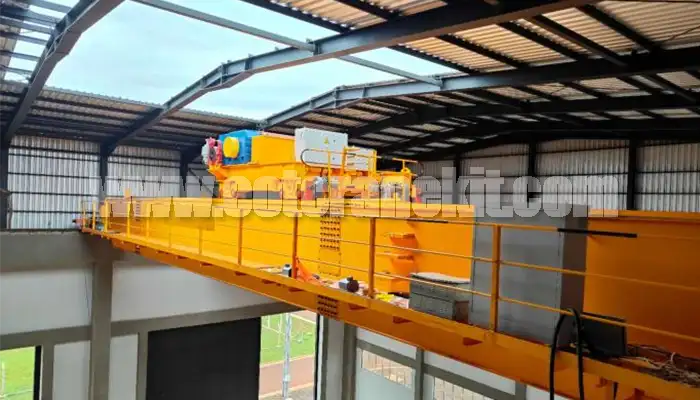
Latest project
150 Ton Overhead Crane Installation Feedback – Paraguay Case
QDX 150 ton overhead crane in action in Paraguay. Installation photos, video, and client feedback show performance, safety, and heavy-lifting efficiency.
Free consultation to Confirm Parameters & Specifications and Get
Latest Crane Price & Crane Rate.
- Types of overhead cranes : _______?
- Optional: Overhead travelling crane, goliath gantry crane,Slewing jib crane, Single girder or double girder crane,small portable crane or kbk crane, etc.
- Capacity of overhead crane: _______?
- Optional: 0.25ton, 0.5 ton, 1 ton, 2 ton, 3ton, 5 ton, 10 ton,15ton, 20ton, 25 ton, 30ton,35ton, up to 550ton, etc.
- Crane span & lifting height : _______?
- Crane travelling length : _____?
- Control of overhead crane:_______?
- Optional: pendant/ remote/cabin control
- Voltage supply of overhead crane:_____?
- Eg,: 380V50/60HZ,3Phase or others,etc.
- Application/usage of crane:_______?
- Eg,: Steel mill, ,injection mold, cement,stone, concrete,granite, general manufacturing, etc.
Just leave a message via the contact form and our hoist and crane engineer will contact you with in 24working hours.
Get In Touch
